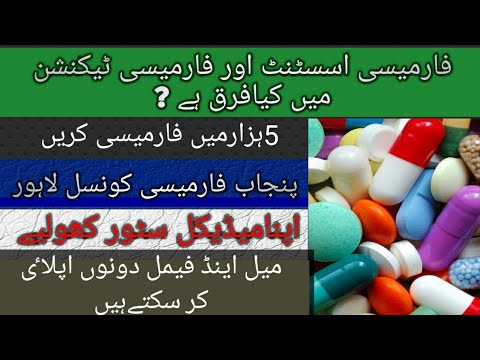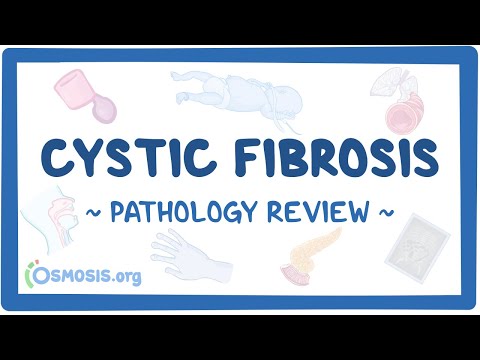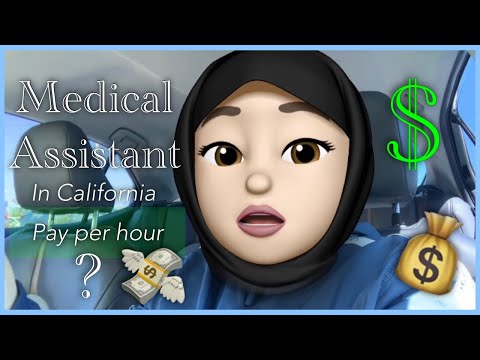Which is Better for You: Pharmacy Tech or Medical Assistant?
Contents [show]
Considering a new career in the medical field? Not sure if you should become a pharmacy technician or medical assistant? Keep reading to learn about the key differences between these two popular positions.
Checkout this video:
The Pros and Cons of Being a Pharmacy Technician
A pharmacy technician is a health care worker who performs duties such as packing and labeling prescription drugs, maintaining records, and answering customers’ questions under the direct supervision of a licensed pharmacist. Medical assistants on the other hand, are multi-skilled health care professionals who perform both clinical and administrative tasks in doctors’ offices, hospitals, and other healthcare facilities.
Becoming a pharmacy technician requires completing a training program and passing a certification exam, but no formal education beyond high school is typically needed. Medical assistants must have at least a high school diploma or equivalent, although some employers may prefer or require postsecondary education, and most states regulate medical assisting to some extent.
Pharmacy technicians typically work in retail pharmacies, hospitals, or clinics, while medical assistants are more likely to be employed in doctors’ offices or outpatient care centers. Both types of workers may be exposed to infectious diseases and hazardous materials and should take precautions to avoid exposure.
The median annual salary for pharmacy technicians was $32,700 in 2017, while medical assistants earned a median salary of $32,480 that same year. Job prospects for both occupations are expected to be good due to the growing demand for health care services from an aging population.
The Pros and Cons of Being a Medical Assistant
The healthcare field is vast, and offers a huge array of job possibilities. So, if you’re looking to enter the medical field, you might be wondering which route is best for you: pharmacy technician or medical assistant?
Both positions have their pros and cons. Below, we take a look at some of the key differences between the two roles, to help you decide which is best for you.
Medical assistants are frontline caregivers who work directly with patients. They are often the first point of contact for patients when they enter a doctor’s office or clinic, and as such, they play a vital role in patient care. Medical assistants are responsible for greeting patients, taking their vital signs, updating their medical records and scheduling appointments. They may also be responsible for administering injections and performing basic lab tests.
Pharmacy technicians, on the other hand, work behind the scenes to help ensure that patients receive the medications they need. Pharmacy technicians are responsible for filling prescriptions, preparing medications for dispensing and answering patient questions about their medications. They may also be responsible for verifying insurance coverage and ensuring that prescription medications are within expiration dates.
Both medical assistants and pharmacy technicians play important roles in healthcare. So, which is best for you? Here are some things to consider:
-Do you want to work directly with patients?
-Do you want a behind-the-scenes job?
-Do you have experience in customer service?
-Do you have experience in the healthcare field?
-Do include clerical duties such as scheduling appointments or updating medical records?
The Differences Between a Pharmacy Technician and a Medical Assistant
Education: A pharmacy technician program typically requires a high school diploma or equivalent, while a medical assistant program may require a high school diploma or equivalent as well as some college coursework.
Certification: Pharmacy technicians must be certified by a nationally recognized organization, such as the National Healthcare Association or the Pharmacy Technician Certification Board. Medical assistants are not typically required to be certified, although they may choose to become certified through the American Association of Medical Assistants.
Duties: Pharmacy technicians generally dispense medication and provide customer service in retail and hospital pharmacies. Medical assistants perform a variety of administrative, clinical and clerical tasks in physician’s offices, hospitals and other healthcare facilities.
Work environment: Pharmacy technicians usually work in clean, well-lit environments such as pharmacies and hospital drugstores. Medical assistants may work in a variety of settings including doctors’ offices, clinics, hospitals and other healthcare facilities.
Salary: According to the Bureau of Labor Statistics, the median annual salary for pharmacy technicians was $32,700 in May 2015. The median annual salary for medical assistants was $30,590 in May 2015.
The Similarities Between a Pharmacy Technician and a Medical Assistant
Pharmacy technicians and medical assistants are both essential members of the healthcare team. They both work closely with patients and provide them with important information and services.
While there are some similarities between these two professions, there are also some important differences. pharmacy technicians typically have more responsibilities related to the dispensing of medications, while medical assistants are more involved in providing direct patient care.
Here is a more detailed look at the similarities and differences between these two important healthcare roles:
similarities:
-Both pharmacy technicians and medical assistants work closely with patients.
-Both provide important information and services to patients.
-Both are an essential part of the healthcare team.
differences:
-Pharmacy technicians typically have more responsibilities related to the dispensing of medications.
-Medical assistants are more involved in providing direct patient care.
The Education and Training Required for a Pharmacy Technician
A pharmacy technician is a person who is trained to Dispense drugs under the direct supervision of a licensed pharmacist. Many States have rules and regulations governing the education and training required for a pharmacy technician. TheAccreditation Council for Pharmacy Education (ACPE) is responsible for the accreditation of professional degree programs in pharmacy and providers of continuing pharmacy education. In order to become nationally certified, candidates must graduate from an ACPE-accredited program and pass a standardized test administered by the Pharmacy Technician Certification Board (PTCB).
Medical assistants, on the other hand, are multi-skilled health professionals who perform both clinical and administrative duties under the supervision of licensed physicians or other health care providers. While their duties vary depending on State laws and individual medical practice settings, they typically include taking medical histories, recording vital signs, preparing patients for examinations, assisting during exams, scheduling appointments, handling correspondence, billing insurance companies and coding patients’ Medical records
The Education and Training Required for a Medical Assistant
Medical assistants complete administrative and clinical tasks in the offices of physicians, hospitals, and other healthcare facilities. Their duties vary with the location, specialty, and size of the practice. Most medical assistants have postsecondary education such as a certificate. Some have an associate’s degree.
Most programs take about 1 year to complete and lead to a certificate or diploma. Some community colleges offer 2-year programs that lead to an associate’s degree in medical assisting. A small number of 4-year colleges offer bachelor’s degrees in medical assisting, which typically include courses in business, psychology, and communications along with clinical training.
The Certification Requirements for a Pharmacy Technician
The certification requirements for a pharmacy technician vary from state to state. Most states require certification by the National Healthcare Association (NHA) or the Pharmacy Technician Certification Board (PTCB). A few states have their own certification programs. Once you have completed a pharmacy technician training program, you will need to take and pass a national certification examination.
The Certification Requirements for a Medical Assistant
There are many different types of medical certification programs available, but not all of them are created equal. The type of program you choose should be based on your career goals and the amount of time you have to dedicate to your education. If you’re interested in becoming a medical assistant you’ll need to complete a certification program that is accredited by the Commission on Accreditation of Allied Health Education Programs (CAAHEP) or the Accrediting Bureau of Health Education Schools (ABHES). These programs typically take about one year to complete and include both classroom and clinical instruction.
Once you’ve completed a certified medical assistant program, you’ll need to pass the exam administered by the American Association of Medical Assistants (AAMA). To be eligible for this exam, you must have graduated from an accredited program within the last five years. Once you’ve passed the exam, you’ll earn the credential Certified Medical Assistant (CMA).
The Job Outlook for a Pharmacy Technician
Pharmacy technicians are in high demand, with a projected job growth of 9% from 2018-2028, according to the U.S. Bureau of Labor Statistics (BLS). This is faster than the average for all occupations. The aging Baby Boomer population will need more prescription medications as they age, and the demand for technicians will increase in response.
Additionally, many technicians are now working in hospitals and other settings where they have direct patient contact. This trend is expected to continue as the role of the pharmacy technician expands beyond traditional drug store settings.
Medical assistants also have a promising job outlook, with a projected growth rate of 29% from 2018-2028, according to the BLS. This is much faster than the average for all occupations. The aging population and the increasing number of people with chronic conditions will require more medical services, driving up demand for medical assistants.
The Job Outlook for a Medical Assistant
There is a great deal of debate in the medical community about which professionals are more essential to the smooth running of a medical facility: pharmacy technicians or medical assistants? Although both roles are important, the job outlook for a medical assistant is much more favorable. In this article, we will explore some of the reasons why a career as a medical assistant may be a better choice for you.
First and foremost, medical assistants are in high demand. The Bureau of Labor Statistics predicts that employment for medical assistants will grow by 29% from 2016 to 2026, which is much faster than the average for all occupations. By contrast, the expected growth rate for pharmacy technicians is only 7%. This means that there will be many more job openings for medical assistants than there will be for pharmacy technicians.
Medical assistants also earn more than pharmacy technicians. The median annual salary for a medical assistant was $32,480 in 2016, while the median annual salary for a pharmacy technician was $30,920. In addition, medical assistants often receive health insurance and other benefits from their employers, while these benefits are less common in the field of pharmacy technology.
Finally, medical assistants have more opportunities for advancement than pharmacy technicians. Medical assistants who obtain certification can move into management positions or open their own practices. Pharmacy technicians who wish to advance their careers often have to return to school to become pharmacists.
There are many reasons to choose a career as a medical assistant over a career as a pharmacy technician. Medical assistants are in high demand, earn more than pharmacy technicians, and have more opportunities for advancement. If you are interested in working in the medical field, consider becoming a medical assistant.







